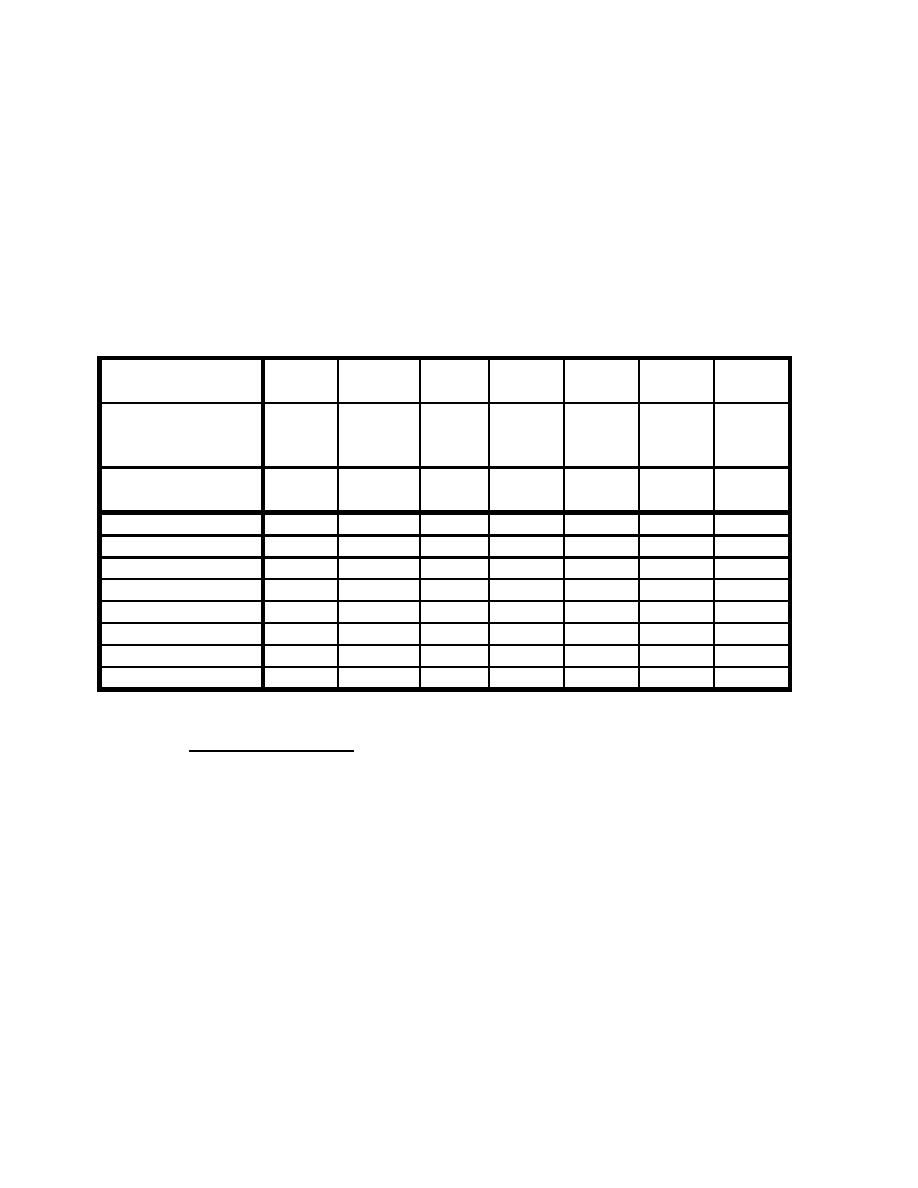

Custom Search
|
|

|
||
 MIL-HDBK-1013/14
For convenience, Table 1 provides a correction factor for, "Vp," based on the speed of
the vehicle at the beginning of the turn, the offset distance available for negotiating the turn, and a
friction coefficient f = 1.0 (the most conservative value).
Table 1
Speed Correction Factor for a Vehicle Traveling Parallel to Barrier
(Based on Friction Coefficient = 1.0)
Speed of Vehicle in
20
30
40
50
60
70
80
mph (kph)→
(32)
(48)
(64)
(80)
(97)
(113)
(129)
Max. Radius of
27
60
107
167
240
327
427
Curve @ f=1.0 ft
(8)
(18)
(33)
(51)
(73)
(100)
(56)
(m)→
Offset Distance in ft
(m) ↓
10 (3.1)
0.616
0.559
0.438
0.342
0.292
0.242
0.208
20 (6.2)
0.966
0.743
0.588
0.470
0.407
0.342
0.309
30 (9.3)
1.0
0.866
0.707
0.547
0.485
0.423
0.375
40 (12.4)
1.0
0.946
0.788
0.656
0.559
0.470
0.423
50 (15.3)
1.0
0.988
0.848
0.707
0.616
0.545
0.470
60 (18.3)
1.0
1.0
0.899
0.766
0.656
0.588
0.515
70 (21.4)
1.0
1.0
0.940
0.809
0.707
0.629
0.545
80 (24.4)
1.0
1.0
0.966
0.867
0.743
0.656
0.574
6.5
Vehicle Kinetic Energy. The kinetic energy of a moving vehicle is measured by its
weight and speed, and may be calculated, as shown in Equation (8).
KE (ft-lbf) = 0.0334 wv 2
EQUATION:
(8)
KE (kgf-m) = 0.0039 wv 2
where:
KE = kinetic energy in foot-pounds force (kgf-m)
W = vehicle total weight in pounds (kg)
v = vehicle speed in miles per hour (kph)
25
|
 
|
|
 |
||